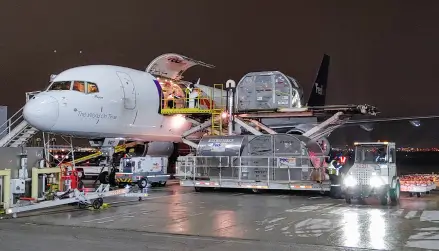The security of global airspace has become an increasingly complex challenge, with recent events shining a spotlight on the need for vigilant risk assessment and robust defenses. The Federal Aviation Administration (FAA) has faced justified criticism for its historical failure to accurately predict and address airspace security conditions. A recent relaxation of rules allowing high-altitude flights over Afghanistan, coupled with the breach of Alaska’s air defense zone by Russian aircraft, underscores the urgency of reevaluating aviation security protocols and recognizing the interconnectedness of threats in an ever-evolving world.
Afghanistan’s Fragile Airspace
The unfolding crisis in Afghanistan has amplified concerns about regional stability and the potential for extremist elements to exploit security vulnerabilities. The FAA’s decision to relax rules permitting high-altitude flights over Afghanistan, despite the volatile conditions on the ground, raises serious questions about the agency’s ability to anticipate and mitigate risks effectively. This move appears to reflect a historical pattern of underestimating the potential impact of geopolitical factors on aviation security.
Russian Aircraft Breach and FAA’s Oversight
The breach of Alaska’s air defense zone by Russian military aircraft serves as a stark reminder of the critical importance of maintaining strong defenses and anticipating potential threats. This incident highlights the need for constant vigilance and robust early warning systems. While the breach occurred in a different region, it draws attention to the broader issue of airspace security and the FAA’s role in ensuring safe skies.
Interconnectedness of Threats
The convergence of Afghanistan’s volatile airspace situation and the Russian aircraft breach underscores the interconnectedness of global security challenges. The FAA’s failure to accurately assess airspace security conditions is not an isolated incident but rather part of a broader pattern of overlooking complex geopolitical dynamics that can impact aviation safety. The Afghan crisis serves as a clear example of how political instability and the resurgence of extremist groups can have far-reaching implications for airspace security.
A Call for Comprehensive Reform
To address these intertwined challenges, the FAA must undertake a comprehensive reform of its risk assessment and decision-making processes. This reform should involve real-time collaboration with international intelligence agencies, diplomatic channels, and regional experts to ensure a more accurate understanding of evolving security conditions. The FAA’s approach must evolve beyond a one-size-fits-all model and incorporate the dynamic and ever-changing nature of global conflicts.
Conclusion
The FAA’s historical failure to predict airspace security conditions, especially in the context of the recent relaxation of rules over Afghanistan, raises serious concerns about the agency’s ability to safeguard our skies. The breach of Alaska’s air defense zone by Russian aircraft further emphasizes the need for a proactive and adaptive approach to aviation security. As the world continues to grapple with complex geopolitical shifts and emerging threats, the FAA must embrace a new era of comprehensive risk assessment, international cooperation, and advanced technology to ensure the safety of global airspace. Only through these collective efforts can we effectively address the interconnected challenges that threaten the integrity of our skies.

